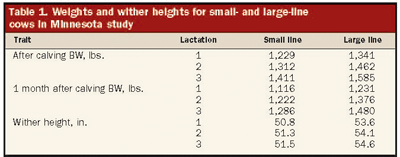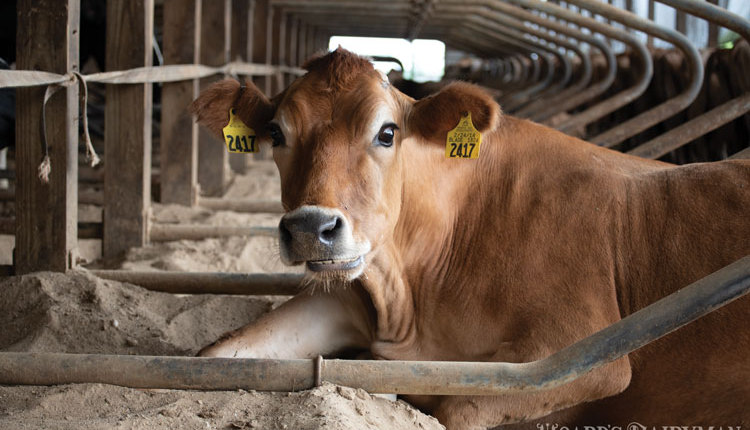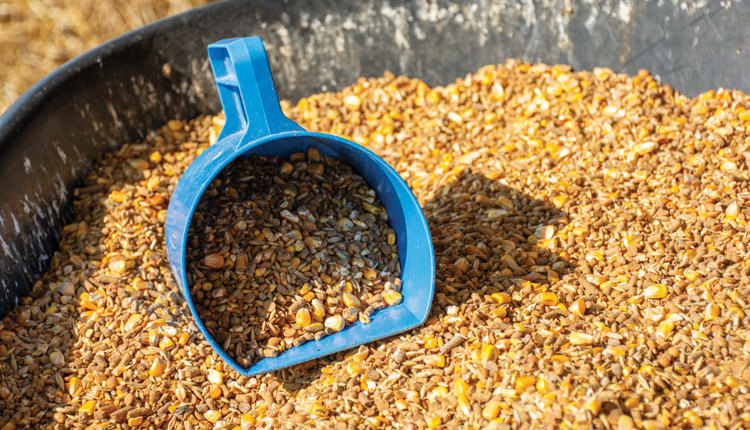The author is in Dairy Field Technical Services and Research, Milk Specialties Global Animal Nutrition, St. Louis, Mo.
Targeted heifer growth has been proposed on the basis that there are both genetic and other factors which affect mature body weight. These factors contribute variation not only to the mature cow but also to the growth phases through which heifers progress.
Genetic variation comes not only from different breeds but within breeds, as well. An example of within breed variation was found in Minnesota due to divergent genetic selection for large versus small body size of Holstein cows from 1966 to 1994. (See Table 1.)

These results contrast with a five-year Holstein herd database of mixed genetic lines from the Purina research herd during 1990 to 1995 shown in Table 2. There was much more variation in the weights and heights among Purina's 28 first-lactation heifers and 61 and 63 third- or fourth-lactation cows.
There are many environmental variables, as Pat Hoffman of Wisconsin has come up with 17 that affect performance other than nutrition. Nutrition itself is comprised of many variables, among which the largest is dry matter intake. Heifer data used in the 2001 Dairy NRC evaluated the relationship between predicted versus observed intakes. The grouping of data was much tighter at the lower intakes, and then it appeared to widen further and also be greater than predicted as intake went up. This variability in intakes is greater than I believe cow data would show and likely reflects the wide range of diets and conditions to which heifers are exposed during their growing period.
Hoffman addressed two main limitations of taking weights or heights to plot heifer growth on a graph. First, desired daily gain or weight of a heifer at a given age depends on genetic size potential. Second, breed- based growth charts used for individual heifers do not take into account that genetic variation for size within a breed can be as great as between breeds.
Cornell workers proposed expressing heifer growth or body weight as a simple function of mature body weight. While acknowledging that the mature weight of cows in most large herds that initiated or expanded with heifers purchased from around the U.S. and Canada is largely absent genetic information, Hoffman proposed a surrogate mature weight based on 0 to 12-day weight after calving. Using factors to adjust postcalving to fourth-lactation mature weight (Table 3), the second-lactation factor appeared to most closely approximate mature weight based on the Purina research herd data. Since body weights were the same for third and fourth lactation (Table 2), if that same relationship held for the Minnesota data, then the second-lactation factor would avoid the overprediction of mature body weight. As noted by Hoffman, it is not easy to get mature weight of cows in a herd, whether by scale or weight tape; and crossbreeding further complicates the data.

Hoffman then developed a universal heifer growth standard (Table 3). He attributed advantages of this method to at least partly suppressing effects of growth variance caused by genetics. That way, multiple heifer growth charts by breed or by size would not be necessary.

This approach was evaluated by Hoffman using 168 heifers and comparing their growth to a traditional Holstein growth benchmark. Variance was reduced by plotting age versus mature weight rather than simply versus body weight. Heifers over 16 months of age and above the growth benchmark line were attributed to overconditioning.
There are several significant limitations of the mature body weight approach. First, is the need for a simple method to gather body weight and wither height measurements of either mature cows or by their second lactation to use as a lactation factor to compute mature body weight. Another very practical problem is grouping and movement of heifers. Alex Bach in Spain evaluated the impact of delaying heifers (2,817 Holsteins) from moving from one group to the next when they had not reached targeted body weight for that group. This was done at a large calf/heifer ranch which raises for 140 other dairies. There is a lot of potential genetic variation. Heifers that were delayed and then regrouped with a new set of younger incoming heifers were weighed every 15 days until they reached the target body weight and then were moved up one group with their initial acquaintances. This resulted in improved daily gain of the older heifers. The overall increased daily gain observed for the first 18 days of regrouping disappeared 45 days later, as the daily gain of delayed heifers then was similar to their nondelayed cohorts. Whether this was due to social order, environmental differences, or differences in body weight or age is not known.
Click here to return to the Nutrition E-Sources
100925_624
Targeted heifer growth has been proposed on the basis that there are both genetic and other factors which affect mature body weight. These factors contribute variation not only to the mature cow but also to the growth phases through which heifers progress.
Genetic variation comes not only from different breeds but within breeds, as well. An example of within breed variation was found in Minnesota due to divergent genetic selection for large versus small body size of Holstein cows from 1966 to 1994. (See Table 1.)

These results contrast with a five-year Holstein herd database of mixed genetic lines from the Purina research herd during 1990 to 1995 shown in Table 2. There was much more variation in the weights and heights among Purina's 28 first-lactation heifers and 61 and 63 third- or fourth-lactation cows.
There are many environmental variables, as Pat Hoffman of Wisconsin has come up with 17 that affect performance other than nutrition. Nutrition itself is comprised of many variables, among which the largest is dry matter intake. Heifer data used in the 2001 Dairy NRC evaluated the relationship between predicted versus observed intakes. The grouping of data was much tighter at the lower intakes, and then it appeared to widen further and also be greater than predicted as intake went up. This variability in intakes is greater than I believe cow data would show and likely reflects the wide range of diets and conditions to which heifers are exposed during their growing period.
Hoffman addressed two main limitations of taking weights or heights to plot heifer growth on a graph. First, desired daily gain or weight of a heifer at a given age depends on genetic size potential. Second, breed- based growth charts used for individual heifers do not take into account that genetic variation for size within a breed can be as great as between breeds.
Cornell workers proposed expressing heifer growth or body weight as a simple function of mature body weight. While acknowledging that the mature weight of cows in most large herds that initiated or expanded with heifers purchased from around the U.S. and Canada is largely absent genetic information, Hoffman proposed a surrogate mature weight based on 0 to 12-day weight after calving. Using factors to adjust postcalving to fourth-lactation mature weight (Table 3), the second-lactation factor appeared to most closely approximate mature weight based on the Purina research herd data. Since body weights were the same for third and fourth lactation (Table 2), if that same relationship held for the Minnesota data, then the second-lactation factor would avoid the overprediction of mature body weight. As noted by Hoffman, it is not easy to get mature weight of cows in a herd, whether by scale or weight tape; and crossbreeding further complicates the data.

Hoffman then developed a universal heifer growth standard (Table 3). He attributed advantages of this method to at least partly suppressing effects of growth variance caused by genetics. That way, multiple heifer growth charts by breed or by size would not be necessary.

This approach was evaluated by Hoffman using 168 heifers and comparing their growth to a traditional Holstein growth benchmark. Variance was reduced by plotting age versus mature weight rather than simply versus body weight. Heifers over 16 months of age and above the growth benchmark line were attributed to overconditioning.
There are several significant limitations of the mature body weight approach. First, is the need for a simple method to gather body weight and wither height measurements of either mature cows or by their second lactation to use as a lactation factor to compute mature body weight. Another very practical problem is grouping and movement of heifers. Alex Bach in Spain evaluated the impact of delaying heifers (2,817 Holsteins) from moving from one group to the next when they had not reached targeted body weight for that group. This was done at a large calf/heifer ranch which raises for 140 other dairies. There is a lot of potential genetic variation. Heifers that were delayed and then regrouped with a new set of younger incoming heifers were weighed every 15 days until they reached the target body weight and then were moved up one group with their initial acquaintances. This resulted in improved daily gain of the older heifers. The overall increased daily gain observed for the first 18 days of regrouping disappeared 45 days later, as the daily gain of delayed heifers then was similar to their nondelayed cohorts. Whether this was due to social order, environmental differences, or differences in body weight or age is not known.
100925_624










